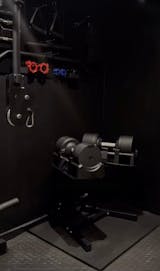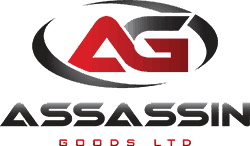Intro
The power snatch is the final power movement in this series and is another advanced movement which you need to master as a functional fitness/crossfit athlete that requires the use of many muscle groups and coordinated skills. As a compound power movement, the power snatch uses a large array of muscles from ground up.
What?
The power snatch consists of five phases, they are the set up, first pull, second pull and scoop, turnover and catch, then sand and recover
What?
The power clean consists of five phases, they are the set up, first pull, second pull and scoop, turnover and catch, then stand and release.
Phase 1 - Set Up
With any Olympic lift is it paramount to have a strong solid set up to use as a base for your lift.
To start with, stand tall with your feet at hip width and set the barbell a couple of cm in front of your shin. Squat down slightly, and bend over similar to a deadlift set up. Your hands are wide and outside your shoulders in a snatch grip. Raise your chest slightly and aim to lengthen the spine, engage your core so your back and midsection feel supported. Look ahead and slightly up.
Phase 2 - First Pull
Initiate the lift with a strong leg drive and straight arms. As the bar raises from the floor, the legs should straighten causing the knees to move out of the way and giving a straight path up for the bar. This movement should be done in a controlled manner getting ready to explode into the 3rd phase.
Phase 3 - Second Pull and Scoop
As the bar passes the knee we initiate the second pull and scoop. The knees rebend under the bar slightly while the hips extend causing the ‘scoop’. During the scoop, explode at your hip to cause an aggressive extension. As your hips and legs reach full extension, drive the ball of your feet into the ground, extend your calves and shrug your shoulders up slightly, this is classed as full extension.
Phase 4 - Turnover and Catch
Once you have reached full extension in phase 3 you must prepare to catch. After the rapid extension of phase 3 you pull your body down into a quarter squat position while rolling your elbows under the bar. Your elbows should rotate to point straight forward and the bar should be caught on the top/front of your shoulders in a front squat position. In the catch aim to have a solid body position bracing your back and core ready to receive the weight.
Phase 5 - Stand and Release
Once the bar has been received in the catch, ensure to take a split second to make sure the bar has been caught solidly and then stand it tall with your chest up. Finally to release, move the bar forwards and down infront of your body, guide it down with your hands and release the bar when around hip height
Common Mistakes
Here are the most common errors made with the power snatch, as well as how to avoid them.
Wide Starting Stance
some people feel stronger and more comfortable widening their stance slightly, unfortunately by doing this, you actually put yourself in a weaker position off the floor, in addition to this it forces your knees and elbows can intefere and cause unusual movement patterns.
Improper Starting Posture
The starting stance is very important as it forms the foundations of the lift, it is common to see people round their back or over squat in the setup. You must always maintain a flat, tight back at the start of a snatch as it is an explosive movement that will put a lot of force through your back. If you suffer from either a rounded back or over squat in the setup, you should practise snatch deadlifts, have someone help you get into the correct starting position and slowly complete the first pull a few times.
Bent Arms In The First Or Second Pull
This is a commonly called an early arm bend, it is usually caused as people try to get pull the bar higher with their arms, this causes an issue as, firstly it is loading the biceps with a heavy weight presenting the possibility of injury as well as potentially limiting the strength as your biceps are much weaker than your legs and back. To avoid this, try to think of your arms as locked out and try not to tense them up too hard, this will naturally help to keep them straight.
Early Transition
An early transition from the extension of the 2nd pull and the catch is a very common mistake. If you do not fully extend in the pull, you are cutting short your strongest phase leading to the bar not getting as much height and therefore you have to get lower to catch it, you can only go so low before it becomes a squat or worse still, a fail. To avoid this you should aim to wait as long as possible before transitioning and think about reaching as high as possible before pulling under.
Splitting Your Legs Out In The Catch
Many people get into the habit of going wider and wider with their legs in order to get lower in the catch, this puts you in a much weaker position catching and also limits your depth. You should aim to catch the snatch in the same foot position no matter how high or low you catch it, a squat snatch uses the same process as a power clean you just catch it low enough that you are in a full squat. A drill you could use to correct this is to set your feet in an overhead squat stance, mark them with some chalk on the floor and then aim to line your feet up in that position each time you snatch.
A good little workout to try for this would be
EMOM 10 (every minute on the minute)
2 Power Snatch
Either pick a weight that you aim to do for all the sets or build up in weight as you go.
Good luck and let us know how you get on!
Workout
EMOM 10 (every minute on the minute)
2 Power Snatch
Either pick a weight that you aim to do for all the sets or build up in weight as you go.



